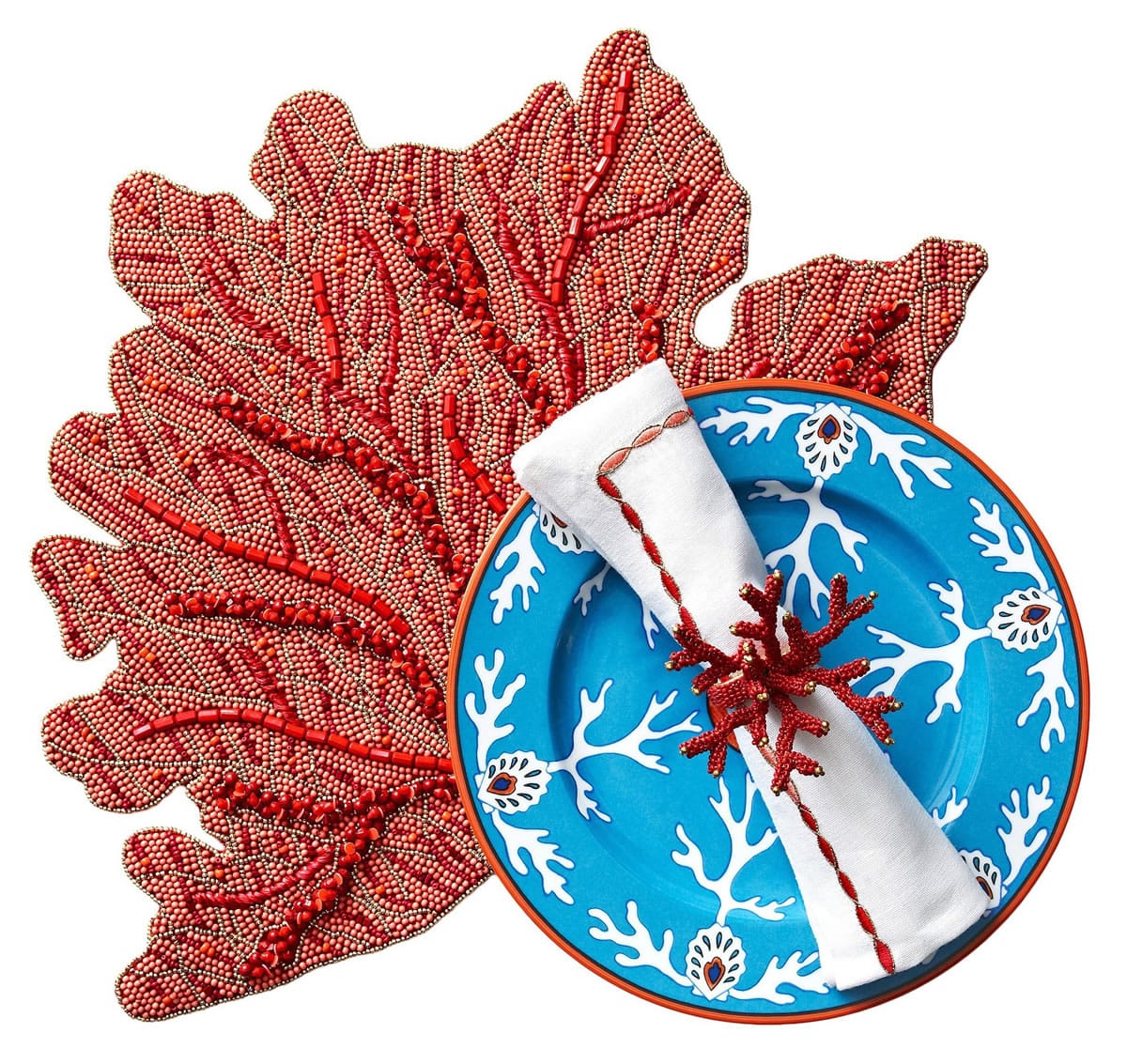Under-the-sea themes are a constant of coastal design. But one marine motif especially transcends styles, as a rich boost to almost any kind of decor, and that is coral.
We love its connection to the sea as well as its organic feel — all branchy, tangled tentacles, tubes and plumes extending. Brain coral with intricate mazelike patterns. Soft coral sea fans, some with a lovely transparency and leaflike veining. And, of course, its namesake hue, which is a brilliant accent in neutral interiors.
But in nature, in addition to 1,400 species of coral on the Great Barrier Reef alone, there are a rainbow of colors, from vivid blues to purples, yellows and greens, as well as the considerable gamut of red to orange. And some designers have been branching out to show less traditional types and colors, blue being especially robust this year.
Coral is sculptural, a quality that lends itself especially well to small decorative objects like tabletop accessories and furniture. For a number of years, tabletop designer Michael Aram, whose inspiration is always organic, has turned out pieces with coral branch accents in silver plate or lobster-red resin, including serving forks and spoons and pedestals for bowls.
The graphic form of coral can be expressed in intricate, all-over patterns, as well as large, splashy strokes that unfold on dinnerware, fabric and wallcovering. An almost calligraphic, blown-up red-on-white coral motif at the Global Views home décor website translates equally effectively to ceramic chargers as it does to dramatic area rugs in hand-tufted wool.
As the subject for paintings and prints, corals long have captivated artists. Many of the signature decoupaged, hand-blown glass plates with coral images from New York artist John Derian are based on 18th-century prints, with a naturalistic style that echoes those of botanical illustrations of the same vintage.
Watercolors and original paintings may lend themselves to more modern looks, especially when scale is beefed up. A set of prints based on original artwork from Williams-Sonoma Home are striking not only because of the bold indigo hues but also the larger format, which focuses on the stylized silhouette of natural coral branches.
Pillows, of course, are a go-to accessory because they can instantly add color and shift mood. Many this year are embellished with embroidery, appliques and beads that lend texture.
For tabletop designer Kim Seybert, embellishment is a signature, and she often has turned to sea life, especially coral, as themes.
“I always have been fascinated with the multitude of varieties of coral,” Seybert says. “I love the different textures, especially how the colors ombre (gradate in shades of one color) into one another, creating the most stunning palettes.
“I always have had an affinity for the water and ocean, even as a girl growing up in Granite City, Ill. I love to work with objects from nature. There is something so sensual and feminine about how these sea creatures change colors and shapes under the water, and this translates well into the textural and beaded quality of my collections.”
Recently, the designer, who loves to spend weekends in her Hamptons, N.Y., home near the beach, was further inspired by a visit to the Oceanographic Museum in Monaco, where Jacques Cousteau was a director for more than 30 years. “It was so special to see the endangered and beautiful coral in their aquariums.”
Coral is, of course, an exquisite living organism and an endangered species. Harvesting as well as global warming and pollution are threatening the balance of its delicate ecosystem, which supports substantial marine life. Tiffany & Co. stopped selling real coral jewelry in 2002, and its “too precious to wear” campaign has extended to fashion and home decor, challenging designers to go faux.




